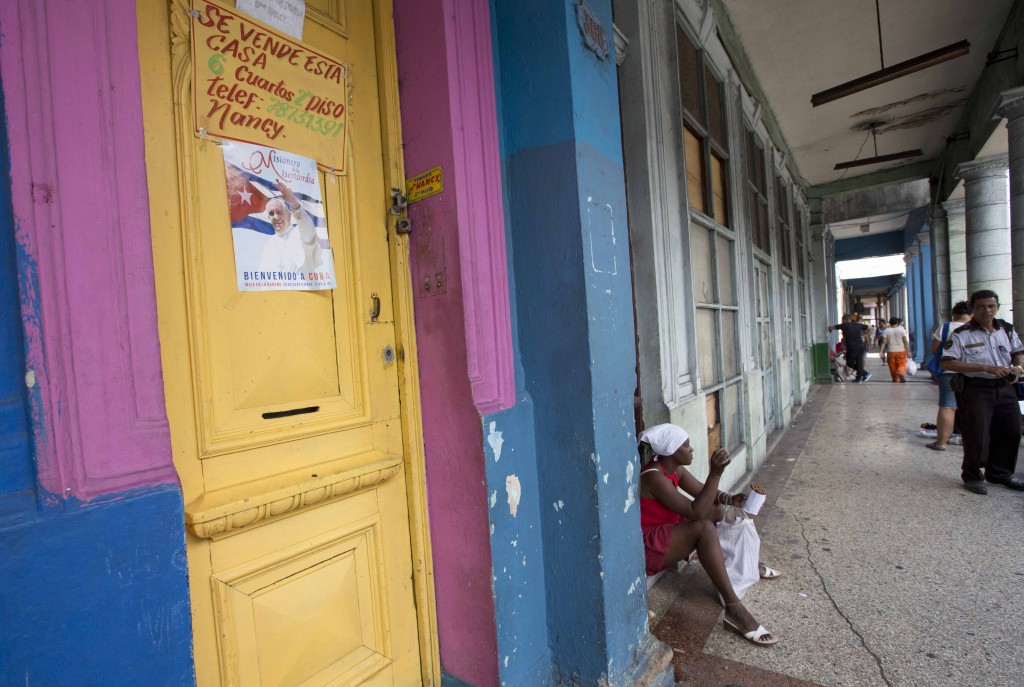
Dear Blog Readers,
After my lengthy post on the Papal trip to the United States (Hacks in Black: On the Papal Plane with Pope Francis), I am going to keep my post on the Cuba leg short. I want to share some of the photos, especially those taken by my AP photographer colleague Alessandra Tarantino, and will accompany them with just a few thoughts. This is not at all a proper report or analysis of the trip just a few impressions.
When we got off the plane in Havana, two things struck me immediately; first, the incredible heat and humidity. We climbed down the stairs from the air-conditioned plane and with in moments were dripping with sweat.
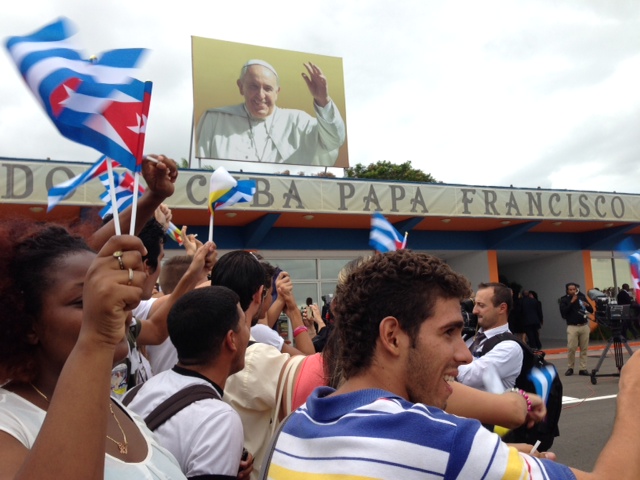
As modern journalists we are all obsessed with sending information-not only sending written and video stories, but tweeting, periscoping, facebooking etc. We struggled to get through the welcome ceremony with speeches by both the Pope and President Raul Castro without being able to file our stories. A woman told us there was a WIFI at the airport and presented us with a lengthy, complicated password and the press corps crowded around her desperate to get it right, but it did not work. We had to wait until we got to the press center at the elegant old Hotel Nacional in Havana. (Being a journalist was so much better before the age of internet and cell phones – we actually had to take time to think things through before we filed back then)
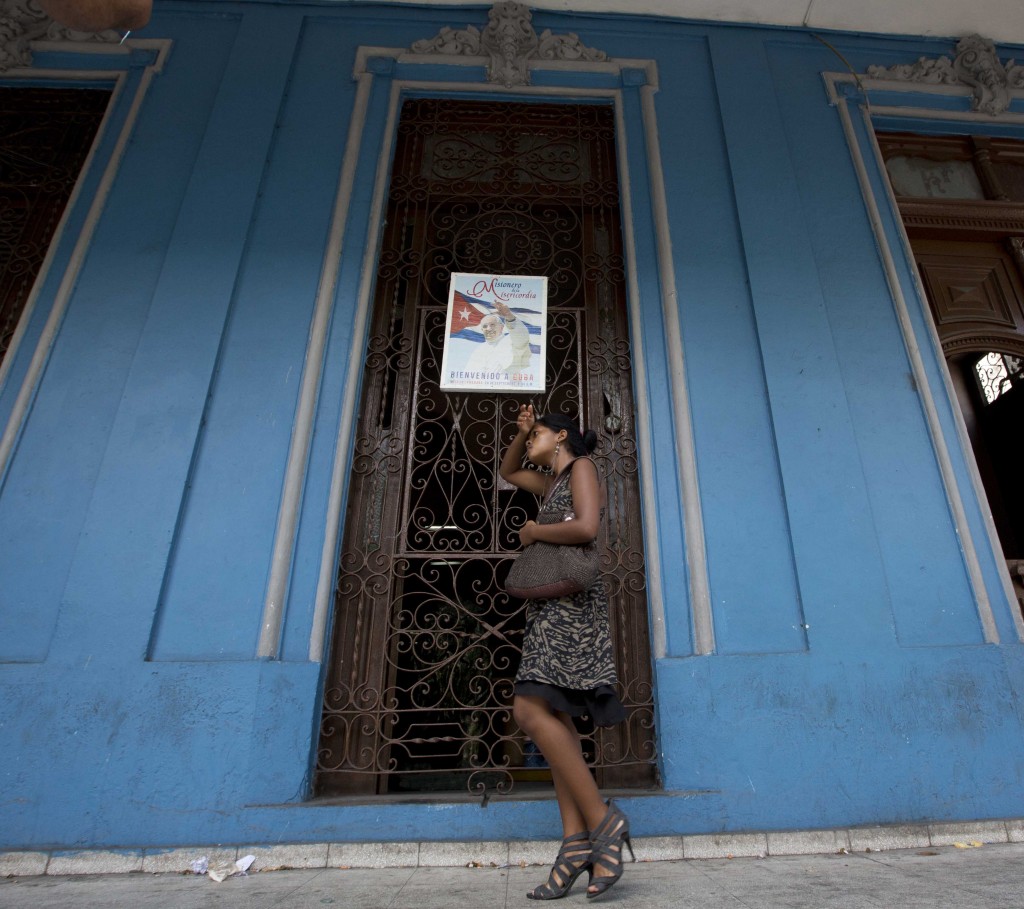
The second thing I noticed was the poverty. There were some attractive young Cuban women helping with the press at the airport, and they were dressed elegantly and professionally for the event, but I noticed that their shoes looked old and worn. In the crowd at the airport no one was waving a cell phone or an ipad to catch a photo of the Pope – they did not have them.
As our bus drove into Havana from the airport, crowds of people lined the road waving and cheering as the Pope past. It was an important event for the country and everyone was coming out to see what was going on.
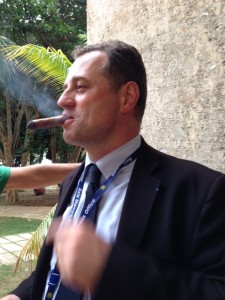
Our first night in Cuba was one of our only free moments on the trip. I noticed French correspondent Antoine Izoard of I.Media quickly found a Cuban cigar to enjoy.
As soon as we filed our report on the Pope’s brief comments on the plane, AP Television video-journalist Paolo Santalucia and I headed out to see Havana. I couldn’t help being the gawking tourist when I saw the old American cars.
There seemed to be some very handsome Cuban men hanging around our hotel in old American convertibles clearly eager to offer their company to rich female tourists.
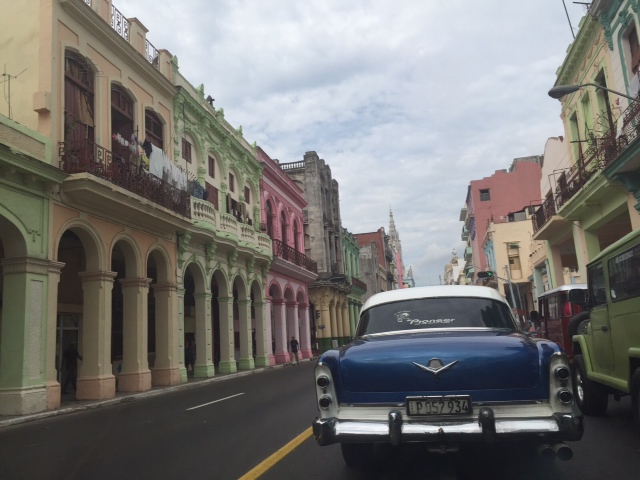
First stop was the gorgeous old San Cristobal Cathedral where the Pope would say Vespers the next day. We wandered down the street to the “Bodeguita del Medio” – the bar/restaurant when the Mojito was supposedly invented and was once frequented by Ernest Hemingway, Pablo Neruda, Nat King Cole and other notable figures.
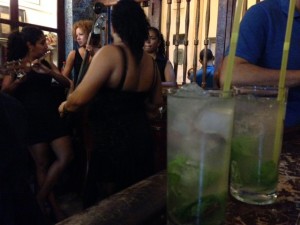
There was a fabulous band playing at the entrance with five women and two men. The flute and cello players particularly impressed me. The music was contagious, the mojito delicious and I was soon buzzing with a high on adrenalin, humidity and rum.
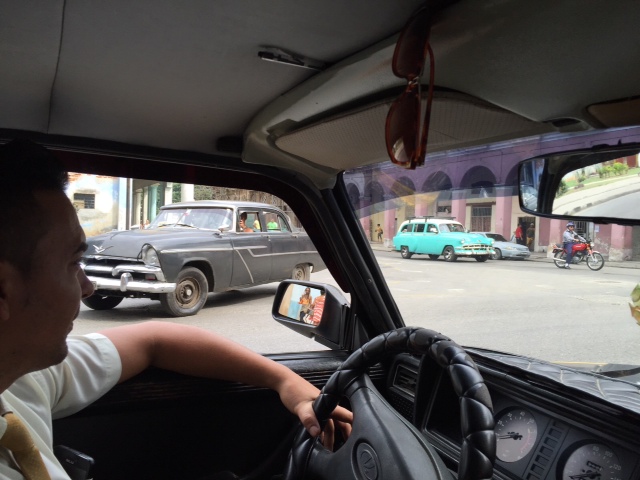
From there we wandered the streets of the old city, which had clearly been cleaned up for the Pope, to the Plaza Vieja, a lovely large square with Colonial style buildings all around it. There we ate dinner—lobster tails–and listened to another fantastic band with an incredible clarinet team. Cubans seem to have an innate musical talent that could be seen as they played at bars and restaurants, but sometimes we saw people playing all by themselves just enjoying the instrument and the sound.

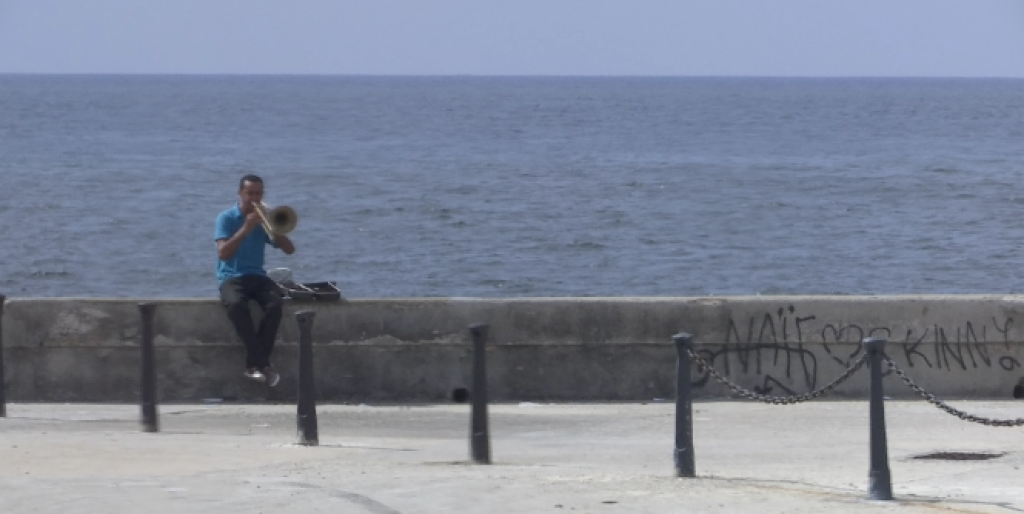
By the end of the meal I was fading dramatically and had to return to the hotel so I would be able to make my 5am wakeup for the Papal speeches.
At dawn we were taken to the Plaza de la Revolucion in Havana. Here are some photos from the Mass there with the Pope.
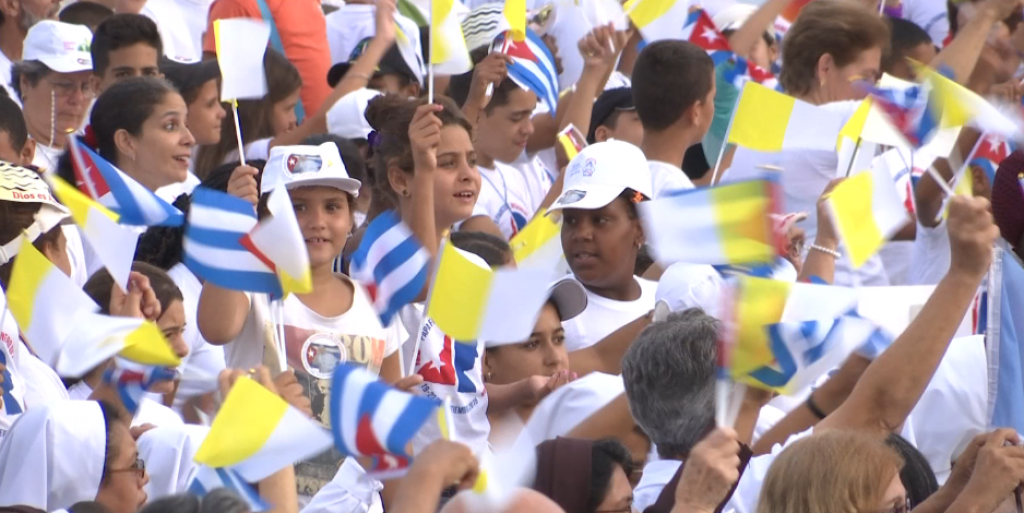
I loved this nun photographer.
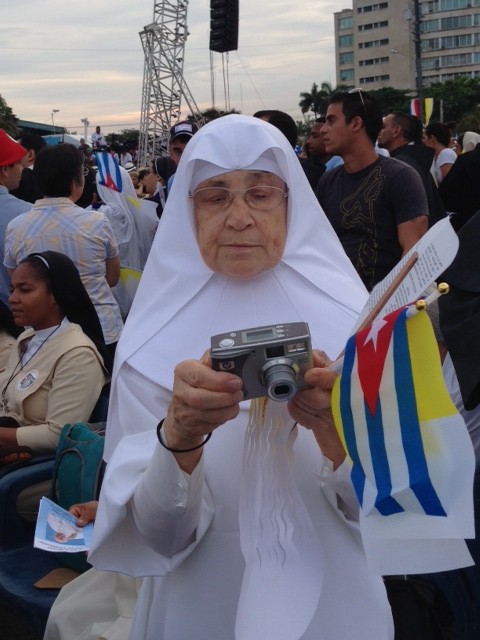
In the afternoon we returned to the San Cristobal Cathedral to wait for the Pope to say Vespers with the priests, nuns and seminarians. The San Cristobal Church did not have air conditioning, and the few fans they did have were turned off so they could have enough power to turn on the lights when the Pope came. We waited and waited, and slowly turned into soaking wet messes.
Finally they allowed us to go out and stand on the side street to get a breath of air. My colleagues went off in search of some water.
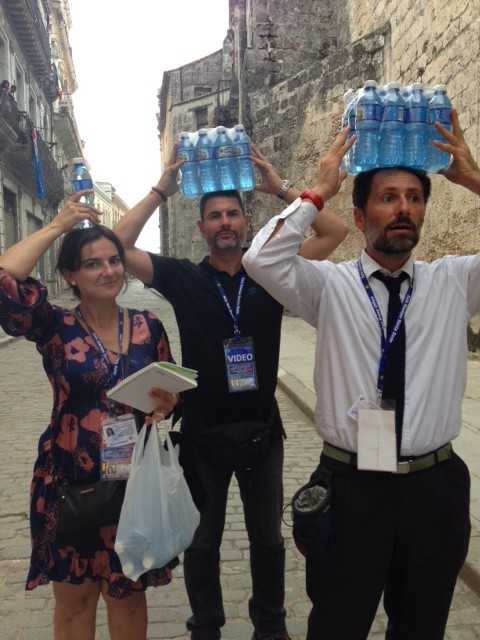
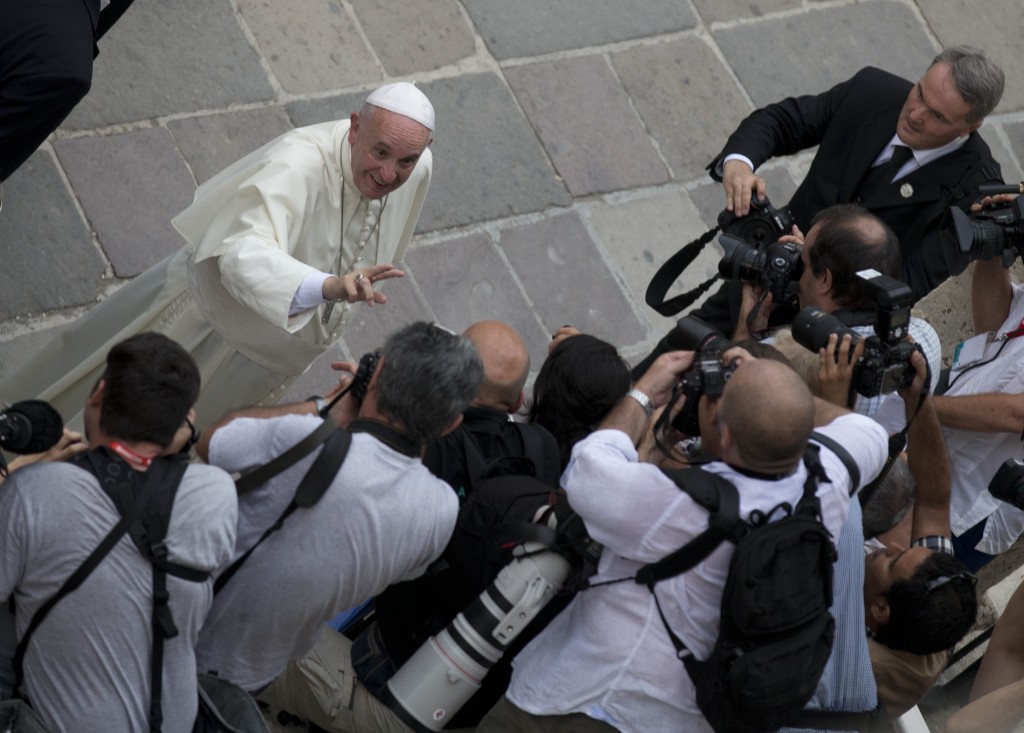
After the Vespers the Pope met with young people who had gathered in the rain to hear him speak. As he did several times on the trip, he tossed his prepared remarks and delivered a speech on dreams. I found it one of the most simple but inspiring speeches of his whole trip. Here are a few quotes from it:
“A young person who is not capable of dreaming is cloistered in himself, he’s closed in on himself. Sure, a person sometimes dreams of things that are never going to happen. But dream them. Desire them. Seek the horizon. Open yourselves to great things.”
“Open yourselves and dream. Dream that the world with you can be different. Dream that if you give the best of yourself, you are going to help this world be different. Don’t forget. Dream. If you get carried away and dream too much and life cuts you off, don’t worry. Dream and share your dreams. Speak about the great things that you want, because inasmuch as your capacity to dream is greater, when life leaves you only half way, you will have gone farther. So, first dream.”
The next morning we left at dawn for Holguin. Again, I was struck at the simplicity of the people and the poverty. The heat was oppressive and I wondered how all the faithful at the Mass managed to stay under the hot sun without fainting. After lunch we headed by to the airport and I notice a huge billboard on the side of the road condemning the US blockage.
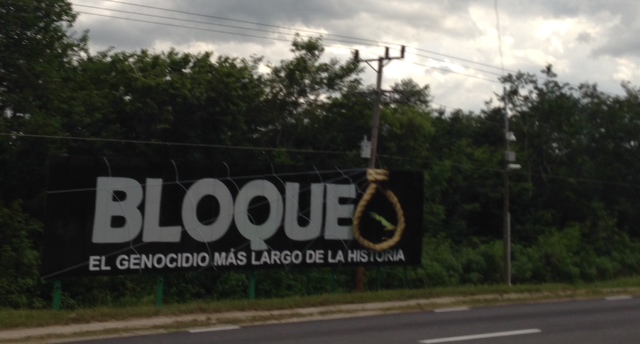
The last place we visited in Cuba was Santiago de Cuba. The evening we arrived, I was lucky to be in a small pool that was allowed to cover the Pope visiting the Sanctuary of the Vergin de la Caridad del Cobre, the Patron Saint of Cuba. The Sanctuary is about a half hour drive through the verdant countryside into the hills.
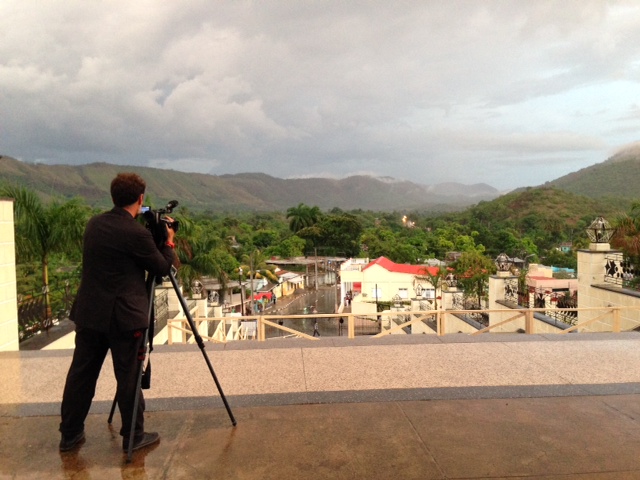
For the history of the Virgin de la Caridad, see pre-trip post on Cuba: “Pope Francis: Revving up for Cuba.”
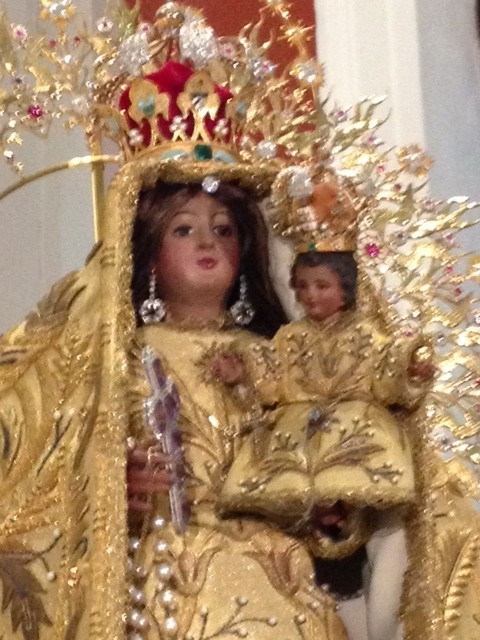
I was eager to see the Virgin up close and thought I would see lots of items placed at her feet. Instead, she was on a stand by herself at the front of the church. The Pope came in with a bouquet of flowers and prayed first silently before her before reading some prayers.
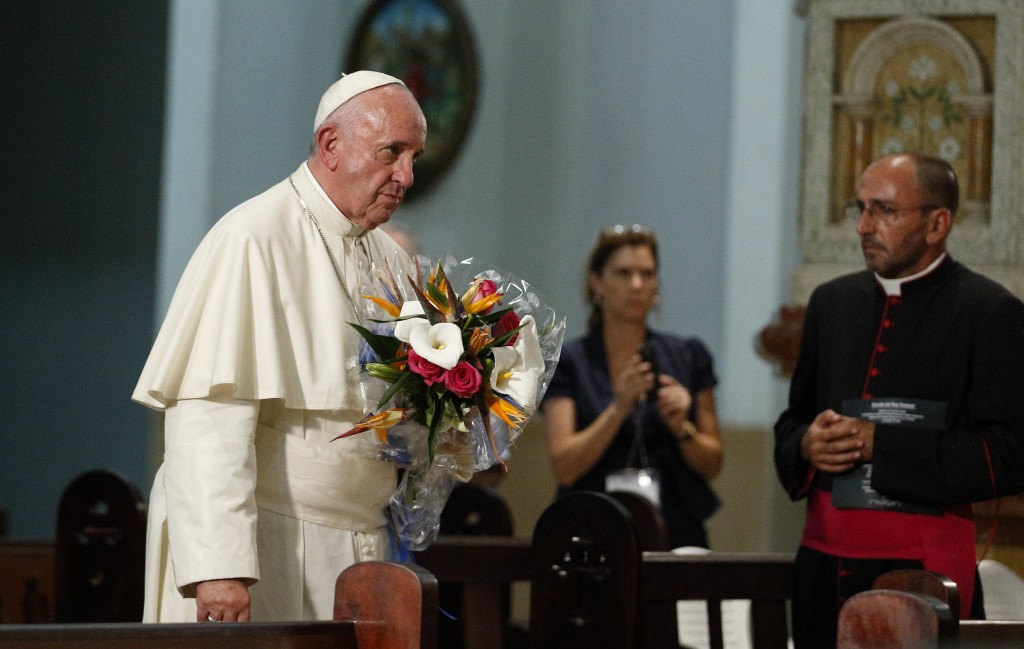
As he was getting ready to leave, the church suddenly filled with the sounds of sweet singing voices. There was a choir of little Cuban girls hidden at the back who had prepared some songs for the Pope. Their singing was lovely. The Pope went straight back to greet them and they were thrilled.
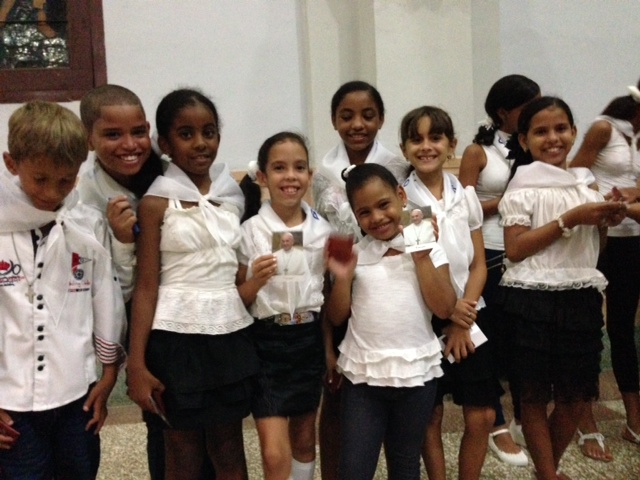
The final Mass in Cuba was for Cuban families at the Cathedral in Santiago. The place was packed and again steaming hot. Again, not a cell phone to be seen. I loved seeing the energy and enthusiasm of all the families and taking pictures of the children gripping their Cuban and Vatican flags as they waited for the Pope.
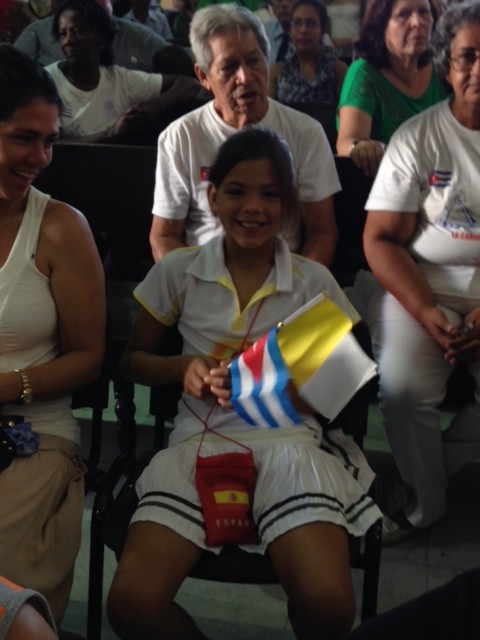
As we were rushed out of the Cathedral to head for the airport and our flight to Washington, I caught a glimpse through an open doorway of a woman watching the Pope’s Mass on a little TV with a big poster of Che Guevara with the title “Guerrilero” on her wall.
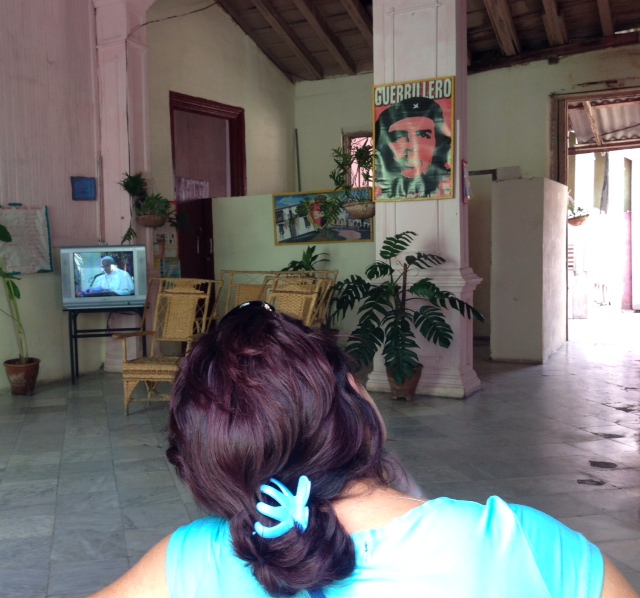
And a special thanks to my colleague, AP photographer Alessandra Tarantino for being so generous with her photos.
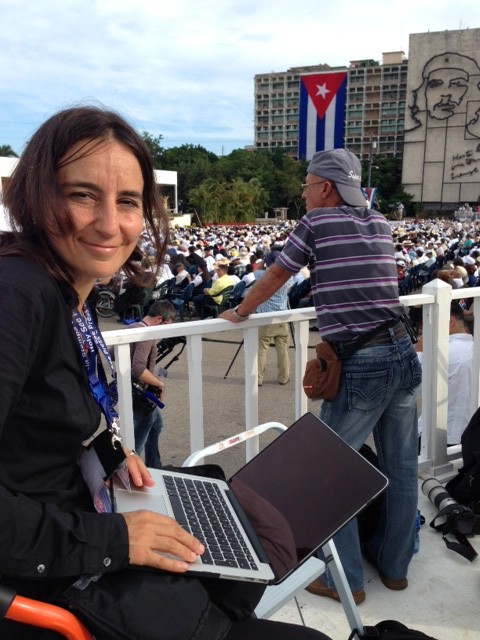
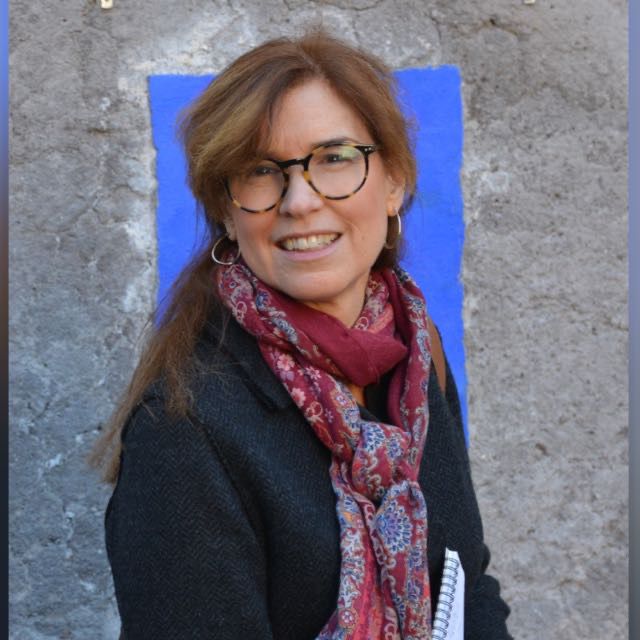
Another interesting report. I liked reading your personal reactions and seeing the pictures that you included. As a former journalism teacher, I am still thinking of one of your early comments and saying, “Amen!” to it. I’m thinking of the one about having time to think before writing/reporting before the Internet and cell phones.
A presto,
Joan
PS My cousin loved your report on the Pope in the US. I will also send her this one.
Hi Joan — I am glad to hear that you liked my comment about the “good ‘ol days” of journalism before the internet and cell phones. I remember as a 23-year-old freelancer in the Philippines going off to remote islands and going out all day interviewing people then coming back to my hotel at night to find a phone message in the box with my room key that an editor had called from New York. Ah, when one had time to think about stories, to interview people, to review one’s notes and contemplate the story– now it is just 24/7 deadlines — file, file, file. Editors these days can call you and harass you anytime anywhere.
Oh how I loved that quote from the pope about dreaming. What an inspiration. And so are you, Trisha – filing away on quick deadline, amid all that frenzy, heat and humidity. It is really striking to think of the dichotomy between the faithful in the states with their cell phones, and those in Cuba who had none. I am as guilty as anyone here of using my cellphone too much to take pictures. Sometimes I think just being in the moment is better. I am so pleased you had a chance to see a little of the city on your first night (And glad you didn’t drink TOO much rum!). It sounds like a fascinating place and a momentous event. – and you were there to record part of history!
Linda, you are always so kind and supportive. Yes, I also loved that quote about dreaming. The Pope also spoke about dreams in the US and several times quoted Martin Luther King Jr. which was nice, but I actually preferred the comments in Cuba.
Hi Trisha,
thanks again for the interesting photos and insightful thoughts.
They are fun to read and always leave me with something or other to ponder. Was it, for example, really “the poverty” that you saw and felt on the Cuban ground? Or could it have been something else? Humbleness? Realness? Or perhaps even “a glorious absence of sophistication”? Not sure, but, judging from your description, the word “poverty” doesn’t quite seem to cut it somehow…
Among the photos, this one is my favorite: the one where the Pope is greeting the journalists, who are taking pictures of the smiling, greeting Pope (well, of course they are), which is then photographed by the ubiquitous Vatican photographer (whose name I forget), all of which is then captured by the AP photographer. As kids these days would say on the Internet, that’s so meta!
And speaking of meta, do you, meaning Vatican-accredited journalists, ever get to hang out with Vatican’s own media personnel, e.g., those from L’Osservatore Romano, Vatican Radio and CTV, to compare notes, to commiserate and speculate on what the heck the Pope might be up to? Or do they travel and remain inside a different papal bubble that is kinda off-limits to journalists from outside?
I understand AP doesn’t really do “featured stories” per se (or do you?), but, a story on these folks, especially Vatican photographers and camerapersons, who “shadow” the Pope at every papal event, both private and public, would make some fascinating reading, especially under Francis’s pontificate. (It would also be very meta, and I would love it.)
Anyway, will you be tagging along with the Pope to Africa in November? Hope so — not least because someone ought to be there to tell certain know-it-alls among the reporters on the papal plane to “shove it” when they go all “know-it-all” on the others, if you know what I mean :-)
I always love reading your comments Beth. And I must admit my ignorance — I didn’t know the expression “meta” — you taught me something new. Gotta try that one out on my teenagers. Yah!!
On the poverty, you are right. I like all the words you used “humble, real, and with a glorious absence of sophistication.” Let’s see how long it lasts.
As far as the tight bubble of Vatican press within the Papal Entourage bubble with the accredited Vatican press corps — it is a mix. All of those with the Vatican press –Osservatore Romano, Vatican Radio and Vatican TV — have little pins on their black jackets that have a flag of the Vatican together with the flag of the Country we are visiting. That distinguishes them and security will let them pass where the rest of us cannot go. They are then mixed in and out with the rest of us with just a few of them — the photographer in the photo, I am forgetting his name right now, and the cameraman who is always with the Pope are kept separate — the rest of them –photographer Simone Risoluti, Sean Lovett of Vatican Radio, Gaetano from Osservatore Romani — were with us most of the time and are friendly. Let me think about your idea of a feature on one them. It is a good idea I just need to think how to do it.